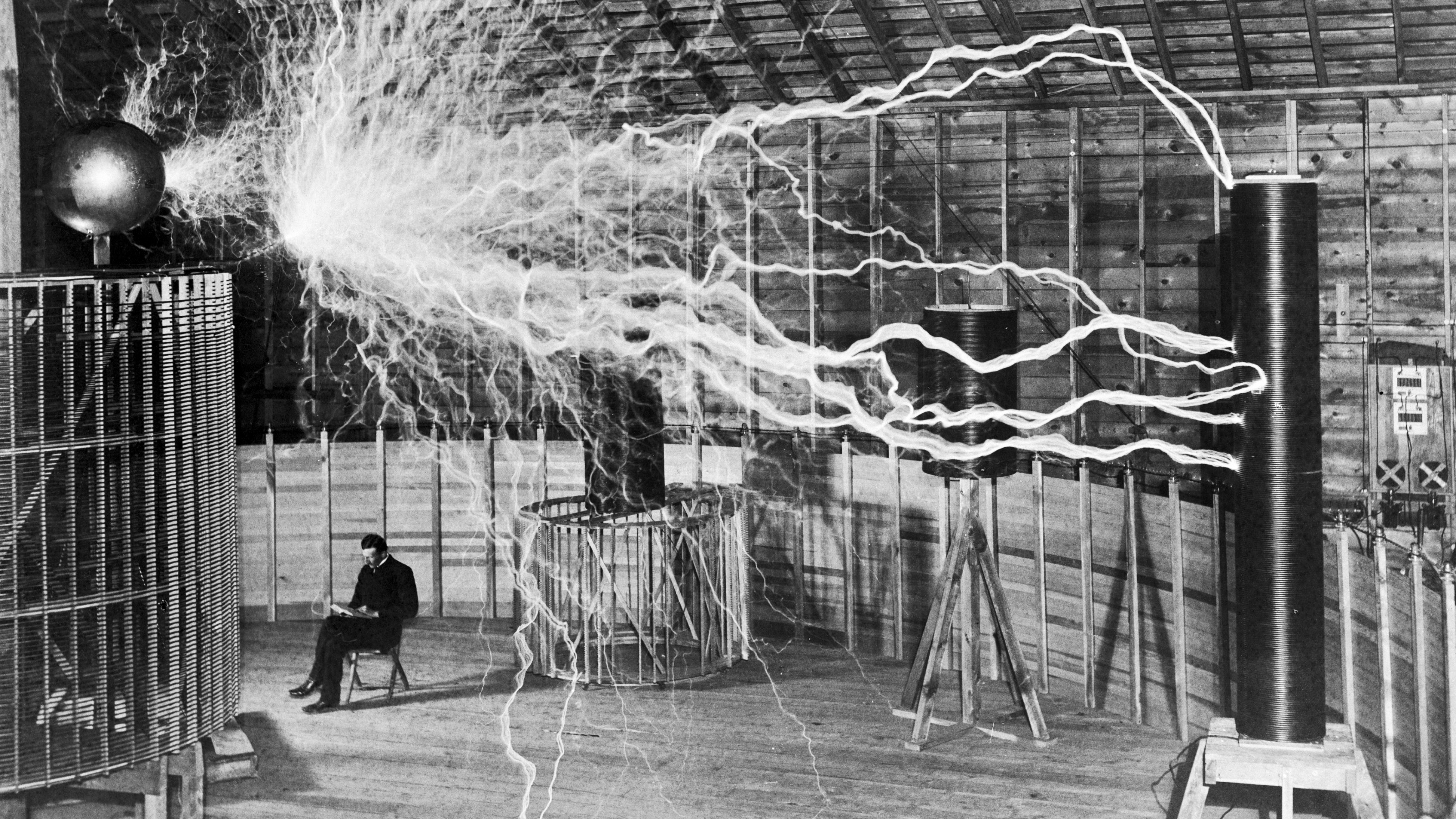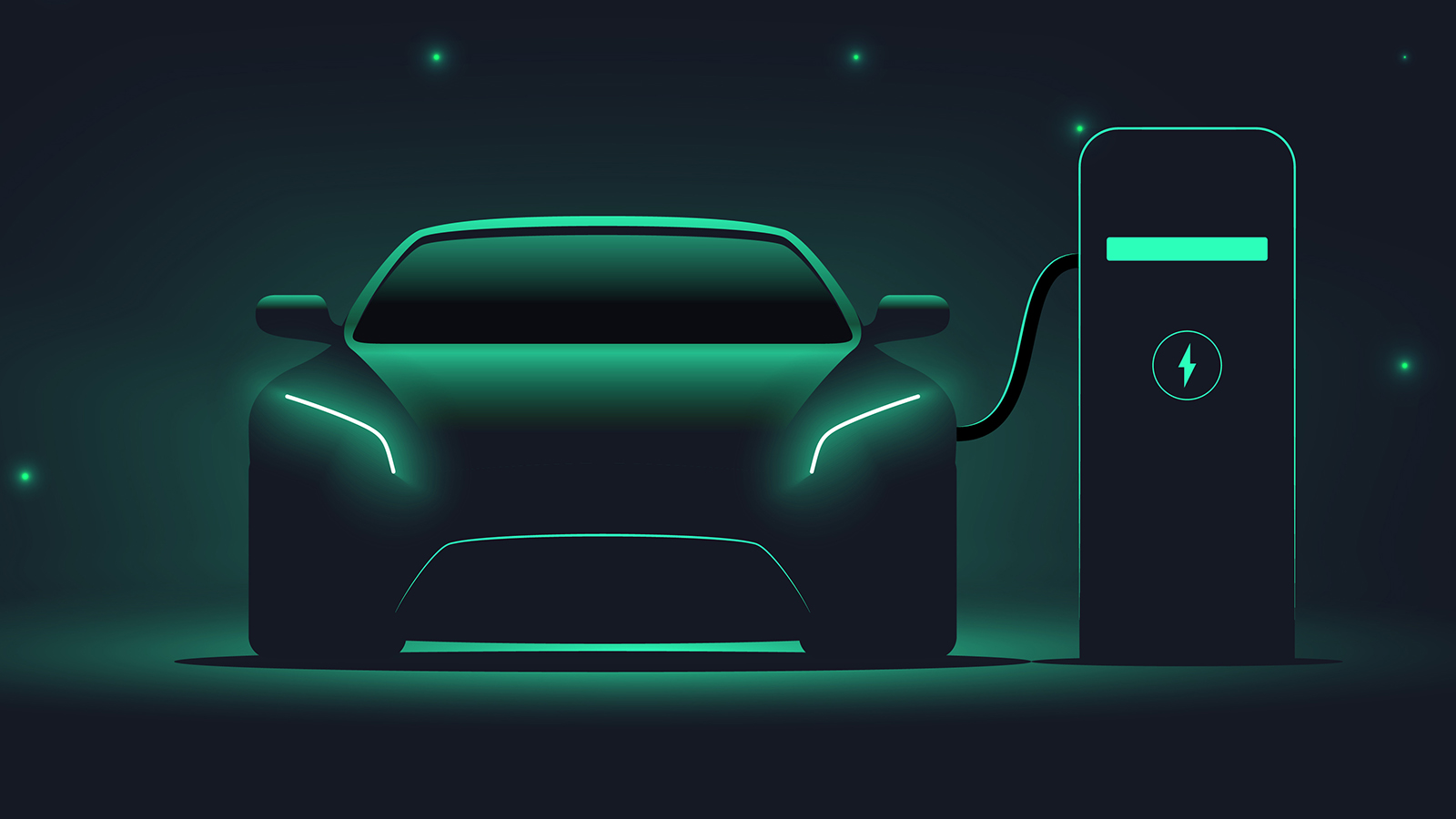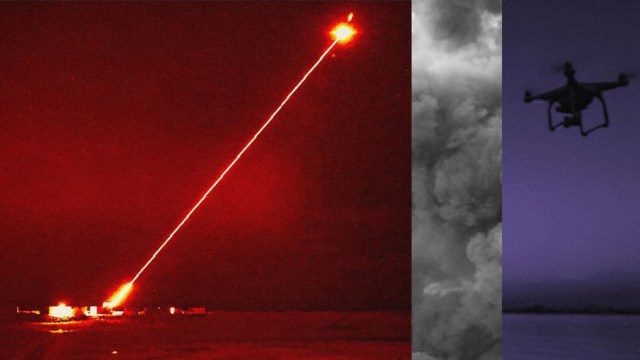Tesla’s pigeon: How the great inventor fell for a bird
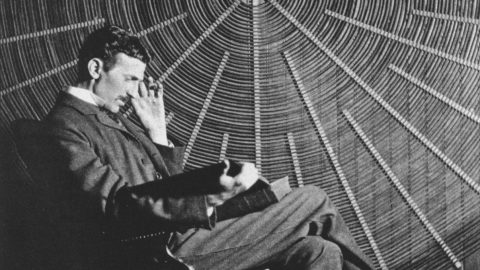
On a February morning in 1935, a disoriented homing pigeon flew into the open window of an unoccupied room at the Hotel New Yorker. It had a band around its leg, but where it came from, or was meant to be headed, no one could say. While management debated what to do, a maid rushed to the 33rd floor and knocked at the door of the hotel’s most infamous denizen: Nikola Tesla.
The 78-year-old inventor quickly volunteered to take in the homeless pigeon.
“Dr. Tesla … dropped work on a new electrical project, lest his charge require some little attention,” reported The New York Times. “The man who recently announced the discovery of an electrical death-beam, powerful enough to destroy 10,000 airplanes at a swoop, carefully spread towels on his window ledge and set down a little cup of seed.”
Nikola Tesla—the Serbian-American scientist famous for designing the alternating current motor and the Tesla coil—had, for years, regularly been spotted skulking through the nighttime streets of midtown Manhattan, feeding the birds at all hours. In the dark, he’d sound a low whistle, and from the gloom, hordes of pigeons would flock to the old man, perching on his outstretched arms. He was known to keep baskets in his room as nests, along with caches of homemade seed mix, and to leave his windows perpetually open so the birds could come and go. Once, he was arrested for trying to lasso an injured homing pigeon in the plaza of St. Patrick’s Cathedral, and, from his holding cell in the 34th Street precinct, had to convince the officers that he was—or had been—one of the most famous inventors in the world.
Tesla said that he and his bird could speak to one another mind to mind.
It had been years since he’d produced a successful invention. He was gaunt and broke—living off of debt and good graces—having been kicked out of a string of hotels, a trail of pigeon droppings and unpaid rent in his wake. He had no family or close friends, except for the birds.
And one in particular.
He told his biographer, John O’Neill, the story himself. “I have been feeding pigeons, thousands of them, for years,” Tesla said. “But there was one pigeon, a beautiful bird, pure white with light gray tips on its wings; that one was different. It was a female. I would know that pigeon anywhere. No matter where I was that pigeon would find me; when I wanted her I had only to wish and call her and she would come flying to me. She understood me and I understood her. I loved that pigeon.”
“Yes,” he continued, “I loved that pigeon.”
Tesla said that he and his bird could speak to one another mind to mind, and that sometimes, as they silently conversed, beams of light would shoot from her eyes.
It would be easy to dismiss the pigeon chapter of Tesla’s life as a bizarre or pathetic turn of events: the once-great engineer who wowed the world with dazzling displays of electricity, whose inventions shaped the way currents ran through our cities and electrified our homes, descending into loneliness or madness, believing himself to be in a romantic relationship with a telepathic bird.
But in doing so, we’d miss something critical. For it wasn’t really a turn of events at all. In a way, they were all of a piece—the blazing currents, the ingenious inventions, the notion of conversing mind to mind—in a moment in time when the universe suddenly had been turned on its head, when the discovery of invisible waves from the electromagnetic spectrum opened up strange new spaces, and the line between the possible and the impossible cut the shape of a wing.
Tesla’s love of pigeons was an obsession with a capital O. Likely followed by a capital C and a capital D. He seems to have suffered from obsessive compulsive disorder, and his case was severe. As a child, he described, “I contracted many strange likes, dislikes and habits.” Dislikes included: anything too round (“the sight of a pearl would almost give me a fit”; “I would get a fever by looking at a peach”) and touching another person’s hair (“except, perhaps, at the point of a revolver”). Likes included: doing things in threes (hence his hotel room on the 33rd floor). As for habits, there was counting: the steps in his walks, the cubical contents of his soup. “If I missed I felt impelled to do it all over again,” he recalled, “even if it took hours.”
He was, from an early age, tormented by intrusive thoughts, a textbook symptom of OCD, though his were extreme: ideas and images that gripped his mind with such unrelenting force they bordered on hallucination. They were often accompanied by flashes of light, the air around him “filled with tongues of living flame.” At times, Tesla’s perceptions seemed to be amplified. “I could hear the ticking of a watch with three rooms between me and the time-piece. A fly alighting on a table in the room would cause a dull thud in my ear,” he wrote in his autobiography.
These experiences shaped the way Tesla thought about thought itself. Because he had little control over them, he felt them to be coming from the outside, as if he were picking up unwanted signals from the world around him. Soon he grew convinced that all thought came from the outside—that our brains pluck images, ideas, and inventions from the environment. “The brain is not an accumulator as commonly held in philosophy,” he decided, “and contains no records whatever of a phonographic or photographic kind. … The brain has merely the quality to respond.” If only he could figure out how the brain decides which signals to tune into and which to keep out or why some were magnified to such terrifying proportions, he thought, we might finally understand the workings of the mind, and he might finally feel connected to other people and at home in the world.
As a young man Tesla’s mind was widely celebrated as among the brightest of his time. At 26 years old in 1882, Tesla conceived of the alternating-current motor. When it was perfected and built six years later, Tesla’s motor completely redefined how one could use electric currents to induce motion.
Existing motors required mechanical parts to keep their rotors turning in one direction. Those parts were subject to friction—they sparked and wore down; they were a drag on efficiency. In an epiphany, Tesla realized that he could replace those physical parts with electrical currents. Most engineers at the time worked with direct current, which flows in one direction, but Tesla saw the potential of alternating currents, which reverse directions, flowing back and forth. The key, he realized, was to use multiple alternating currents that were out of step with one another. That way, their voltages could cancel out at just the right moments to produce a combined magnetic field that would steadily rotate, causing the rotor to spin. The relationship between currents could do the work of a machine.
“It was a fundamentally brilliant insight,” says W. Bernard Carlson, a historian of technology at the University of Virginia. “To this day, all alternating current motors, whether in the hard drive of your computer or your refrigerator or an elevator, follow the same basic principle. Before Tesla, you only had electric lighting. After Tesla, you could have electric light and power.”
Tesla, though, had something much bigger in mind. It began with the Tesla coil, which he designed in 1891. He had set out to create an induction coil (a device in which the electrical current in one coil of wire induces a current in a second coil of wire) when he realized what would happen if this time the currents were in sync. By adjusting the lengths of the coils so that their electrical vibrations aligned, Tesla discharged a rip-roaring spark.
This was the phenomenon of resonance—the same principle that explains how tuning forks ring and sympathetic pendulums swing, why there’s music in the harmony of the spheres. Tesla turned it into an engineering principle. And he saw that it stood to solve a problem that was vexing science.
Before Tesla, you only had electric lighting. After Tesla, you could have electric light and power.
In 1865, James Clerk Maxwell had unified electricity and magnetism, showing that visible light was an electromagnetic vibration—and that there could be others. Only with the discovery of radio waves by Heinrich Hertz, in 1888, did it dawn on scientists that there existed an entire electromagnetic spectrum that was, in principle, infinitely vast. At the lowest end of the known range, radio wavelengths could span the planet, while a wavelength of visible light might be 100 times smaller than the width of a human hair, and gamma rays, in the upper register, vibrated on the scale of atomic nuclei. Wilhelm Röntgen’s 1895 discovery of X-rays only furthered scientists’ feeling that the universe had cracked open and that a brave new world was spilling out. The British newspaper The Standard reported that “the universe was full of different sorts of vibrations, of which [scientists] had not the remotest knowledge or slightest suspicion”—waves that could cut through a London fog, and rays that could pass through buildings and bone.
In a few short years, the world had grown infinitely richer, full of mysterious new possibilities. The question was how to access and utilize those vibrations. What was needed, said physicist William Crookes, who did pioneering work on electron beams, were “more receivers which will respond to wavelengths between certain defined limits and be silent to all others.” This, he said, is “the most difficult of the problems to be solved.”
Tesla saw the solution in resonance. When the alternating currents in his coils vibrated in sync, they not only produced sizzling sparks, they also emitted radio waves—attach an antenna and you’ve got yourself a radio transmitter. By tuning the coils, Tesla could choose the frequency of the emitted waves. In turn, those tuned coils, exposed to radiation coming in through the antenna, would only respond to waves of the resonant frequency. The Tesla coil could serve as a tuned receiver.
“Tesla was one of the first to really understand this idea of tuning,” Carlson says. “His big insight was that radio waves could be resonant phenomena.” Tesla’s coil was a potential solution not only to Crooke’s problem but also, Tesla hoped, to his own—to the problem of how his brain tuned in to the world.
The study of electricity and the nervous system had always gone hand in hand. The first measurements of moving current were made in the 18th century by Luigi Galvani, who connected a frog’s nerve to a long metal wire and held it up to a stormy sky, channeling electricity from the air; when lightning flashed, the frog’s muscles contracted. Alessandro Volta modeled the first battery on the nerves of the electric eel; Samuel Morse used that battery to power his electric telegraph lines, then turned right back around and compared his telegraph to living nerves. An 1837 article in The Scotsman expounded on the possibilities of cities linked by “electric nerves”: “Men a thousand miles from each other would be enabled to confer as if they were in the same apartment, or to read each other’s thoughts as if they were in the sky.”
Just as the first electrically coded messages were being sent along telegraph wires in the 1840s, the first precise measurements of electrical activity in neurons were being made. So when Hertz discovered radio waves traveling wirelessly through the air, a new neural concept suddenly became possible; perhaps there were also “brain waves.”
If accelerating charges in a wire could induce wireless vibrations in the ether, scientists thought, surely sparks in neurons could, too. “Brain waves are fashionable in London at this moment,” read an 1897 edition of the Boston Evening Transcript, reporting on remarks by Crookes. “His brain wave theory is only an extension of the law governing the vibrations of sound and light.” The idea was that somewhere in the vast and unexplored electromagnetic spectrum one could find thought.
“The discovery of wireless radio made people rethink the basic ideas of consciousness,” says Anthony Enns, a researcher at Dalhousie University in Nova Scotia who studies the history of technology and its relation to pseudoscience. “Crookes was fascinated by the idea of the brain as a kind of radio transmitter and receiver,” while Oliver Lodge, one of the pioneers of radio, “saw consciousness as a kind of energy field that was not located in the brain but surrounded the brain.” If thoughts generated brain waves, why couldn’t other minds pick them up? “The air is as full of brain waves as it is of sunbeams and starlight,” penned one newspaper reporter of the time.

The distance between humans seemed to be shrinking, and the possibility of thought transference seemed an increasingly natural outcome of Maxwell’s theory of electromagnetism. The writer Mark Twain who was known to hang out in Tesla’s lab, told Harper’s Monthly:
The telegraph and the telephone are going to become too slow and wordy for our needs. We must have the thought itself shot into our minds from a distance. … Doubtless the something which conveys our thoughts through the air from brain to brain is a finer and subtler form of electricity, and all we need to do is find out how to capture it and how to force it to do its work, as we have had to do in the case of electric currents. Before the day of telegraphs, neither one of these marvels would have seemed any easier to achieve than the other.
The great inventors were hard at work, trying to be the first to build this mental telegraph. Alexander Graham Bell, for one, constructed helmets made of coiled wires, which two people could wear, one transferring their thoughts to the other. The result? “The thought in one brain has produced a sensation in the other, through the two helmets, but what the relation was between the thought and the sensation could not be determined,” Bell reported to McClure’s Magazine at the time.
Tesla proposed a technology that went beyond transmitting mere thoughts. He called it “television”—not to be confused with what we now know as television—by which one could “see at a distance” what another person was seeing in their mind. He figured that since vision involves excitations running from the retina up to the brain, perhaps imagination involved signals traveling from the brain back down to the retina. With a device capable of reading those signals off the retina, Tesla explained, “we may finally succeed in not only reading thoughts accurately but reproducing faithfully every mental image.” We could even “project the images conceived on a screen and render them visible to an audience,” he said. He assured the world that he was working on it.
Tesla didn’t subscribe to spiritualism; he didn’t believe in the psychic or the supernatural, though plenty of high-minded scientists of his time did, including the likes of Lodge and Crooke. Tesla described his own view of the universe as “grossly materialistic.” And yet he could wish for his pigeon and she would come; he could understand her through the lights from her eyes.
If such things seem contradictory, it’s because that moment has come and gone, a time when the line between the material and the mental was hard to make out, when matter and mind both had their places upon the same electromagnetic spectrum, a spectrum with infrared and radio at one end, visible light somewhere in the middle, along with fear and love, hope and X-rays, and gamma rays in the far reaches, along with imagination and ideas.
Tesla was going to “convert the entire Earth into a huge brain.”
It was a period in the history of science when previously unimaginable ideas were coming not just into focus, but fruition. At the dawn of the 1840s, there was no telegraph, no phonograph, no radio, no phone. By 1901, disembodied voices could be summoned from the ether; messages could be sent across the ocean, surfing electromagnetic waves. It was enough to leave the public dizzy and scientists speculating. “When there’s a new scientific discovery that throws in the air our old scientific concepts, then a lot of extraordinary theories can be entertained,” says Enns of this period of electromagnetic magical thinking. The line between science and pseudoscience becomes difficult to draw.
The current, Enns says, can also flow both ways: “Unorthodox ideas can end up directing what we do in our legitimate scientific practices.” In 1924, the German psychiatrist Hans Berger set out to prove the existence of telepathy by measuring brain waves emanating from the skull. “His idea was that if you could record these electrical impulses, it would show that the brain was a communication device,” Enns says. So Berger invented the electroencephalogram (EEG), a foundational technology of modern-day neuroimaging. We no longer think of our brains as wireless telegraphs or thoughts as things that can be transmitted by brain waves; now we think of brains as computers and thoughts as things that can be uploaded to the cloud. “These ideas have not really gone away,” Enns says.
For Tesla, nerves in the brain had to work by the principle of resonance, which meant thoughts were things we could all tune into, given the right device. If he could create a technology that would allow everyone around the globe to resonate with one another, it “would be of inestimable consequence on all human relations.” Especially his own.
So that was his plan. He was, as he put it, going to “convert the entire Earth into a huge brain.”
At the turn of the century, and the height of his fame, Tesla announced his plans to create a “World System” that would unite in literal harmony the entire globe, allowing people everywhere to send energy and information to be received by anyone, anywhere else.
Other scientists were also experimenting with wireless radio communications, sending electromagnetic waves between grounded transmitters and receivers. The assumption was that the signals were traveling through the air, while the ground currents merely completed the circuit. But Tesla was convinced they had it all backward—there was no way, he said, that the signal would make it through the air for long distances. Light waves travel in straight lines, but the Earth is curved—the information would be making a beeline for outer space. No one at the time knew that radio waves would run up against charged particles in the ionosphere and reflect back.
So Tesla figured that the messages had to be going through the ground. The Earth, he thought, must be a resonant cavity that could host standing waves of electrical vibrations—waves that could be plucked like guitar strings. If he could pump in energy at the Earth’s resonant frequency, he could set the electrical activity of the entire planet aquiver, and use it to transmit messages or power between any two points on the globe.
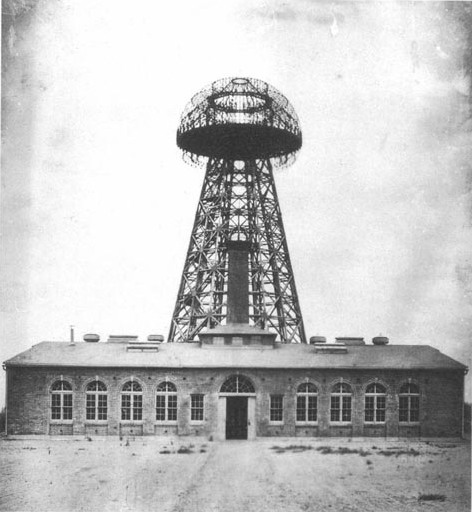
In 1901, on the northern shore of Long Island, at a site called Wardenclyffe, Tesla erected a 187-foot mushroom-capped tower while the locals looked on bemused. From the base of the tower, a circular staircase wound down to a well 120 feet below the surface, from which there extended an array of iron pipes and four stone-lined tunnels, 100 feet apiece, where the electricity would be pumped into the ground.
To the press he promised that a system of such towers—giant Tesla coils, in effect—would connect all existing telegraph exchanges. It would allow government agencies to send secret messages, which no spy could intercept. It would integrate all the phone lines, create a global news media, link up the world’s stock tickers, distribute sermons around the globe. It would synchronize clocks; transmit images, text, and music; it would provide a global navigation system to steer the ships, and energy to power them. It would send messages—person to person—in a flash, to “an inexpensive receiver, not bigger than a watch.” It would broadcast the thoughts from one’s retinas to whoever else wanted to see them. And, more than anything, it would make Tesla a little less lonely.
Tesla’s OCD had shaped his thinking about thinking, sparked his interest in resonance, and molded the form of his inventions—but it also left him disconnected and alone. He didn’t like to shake hands and often wore white gloves when out in public. He ate by himself at a special table that no one else at the hotel was allowed to use. As his biographer O’Neill noted:
A fresh table cloth was required for every meal. He also required that a stack of two dozen napkins be placed on the left side of the table. As each item of silverware and each dish was brought to him—and he required that they be sterilized by heat before leaving the kitchen—he would pick each one up, interposing a napkin between his hand and the utensil, and use another napkin to clean it. He could then drop both napkins on the floor. Even for a simple meal, he usually ran through the full stock of napkins.
If a fly landed on the table, they had to remove everything and start over. If a woman nearby wore pearls, it put him off his food.
But if the tower worked, he’d be able to connect to other people, to all people; he wouldn’t even have to wear his white gloves. As a child, Tesla played a game with his father where they’d try to guess the other’s thoughts. With the tower, no one would have to guess. It wasn’t so much that they could read each other’s individual minds. It was that they’d all be thinking together, multiple currents moving in and out of step, the invisible cogs and gears of a single brain. “These ties we cannot see, but we can feel them,” he wrote. In the world of the tower, we would cease to be isolated individuals—for a resonance is always a relationship.
It was a failure from which Tesla never recovered.
By 1902, the tower was completed, but the rest of the site wasn’t, and he was running out of funds. A year later, it became clear that no money was coming, and Tesla had nothing to show for the project, no evidence that the thing would work, and no way to attract new investors. Frustrated, he cranked up the coil, discharged a storm. “The air was filled with blinding streaks of electricity,” the New York Sunreported, “which seemed to shoot off into the darkness on some mysterious errand.”
Today, scientists largely agree that Tesla’s tower, even if completed, would never have worked. “He thought that he could transmit power through the Earth with no losses because the Earth would function like an inelastic medium,” Carlson explains, “but it doesn’t.” It was a beautiful idea. The real world simply didn’t match up with his grand vision.
It was a failure from which Tesla never recovered.
In the years that followed, he became more of a recluse. Once in a while, he’d make some wild pronouncement or another to the press—death rays and flying machines, a plan to send power to the moon—more inventions he’d dreamed up but for which he had nothing to show. The public grew impatient. Science moved on without him. “He was a broken man,” Carlson says.
In December of 1916, Tesla was to receive the prestigious Edison Medal from the American Institute of Electrical Engineers “for meritorious achievements in his early original work in polyphase and high-frequency electric currents”—emphasis on the “early.” The ceremony was held just steps from Bryant Park. But when Tesla was meant to take the stage, he was nowhere to be found. The engineers looked everywhere—the hallways, the restrooms—before rushing outside. In the plaza of the public library just adjacent, as O’Neill described it, “in the center of a large thin circle of observers stood the imposing figure of Tesla, wearing a crown of two pigeons on his head, his shoulders and arms festooned with a dozen more, their white or pale-blue bodies making strong contrast with his black suit and black hair, even in the dusk. On either of his outstretched hands was another bird, while seemingly hundreds more made a living carpet on the ground in front of him.”
Eventually, Tesla went back inside and accepted his medal. The tower at Wardenclyffe was dynamited and sold for scraps.

Before there were towers—before there was radio, before there were telegraphs—there were pigeons. Homing pigeons, prized for their exceptional navigation, had been used to transmit messages since the days of Julius Caesar. A well-trained bird could fly 600 miles without stopping, averaging 60 miles an hour at a pace. In wartime, they served in the Army, the Navy, the Air Force, the National Guard; even the U.S. Forest Service and CIA employed pigeons. When Paris was under siege by the Prussians, homing pigeons carried critical notes in and out of the city; using microphotography, the French could fit thousands of messages in the legband of a single bird. In the United States, pigeons flew news stories and stock prices. Papers like the New York Sun and the Boston Daily Mail relied heavily on pigeon post; the Baltimore Sun flew 500 birds between New York City and Washington, D.C.
But when Guglielmo Marconi, using a system of Tesla’s resonant circuits, transmitted the first wireless radio signal across the Atlantic in 1901, the pigeons were suddenly in trouble. “Marconi Beats Pigeons,” read the headline of The Brooklyn Daily Eagle: 200 homing pigeons employed by the Brooklyn Navy Yard to communicate with warships were about to be out of work. “It is thought that the Marconi system can be maintained as cheaply as the pigeon system,” the article reported.
So the unemployed ended up astray in the streets. And Tesla, whose inventions had put them out of a job, took them in.
“Sometimes I feel that by not marrying I made too great a sacrifice to my work,” 70-year-old Tesla told a reporter, “so I have decided to lavish all the affection of a man no longer young on the feathery tribe. I am satisfied if anything I do will live for posterity. But to care for those homeless, hungry, or sick birds is the delight of my life.”
And the white pigeon in particular seemed to stir something in him.
“If she needed me,” Tesla said, “nothing else mattered. As long as I had her, there was a purpose in my life.”
“One night as I was lying in my bed in the dark, solving problems, as usual, she flew in through the open window and stood on my desk,” Tesla told O’Neill. “I knew she wanted me; she wanted to tell me something important so I got up and went to her. As I looked at her I knew she wanted to tell me she was dying. And then, as I got her message, there came a light from her eyes—powerful beams of light. Yes, it was a real light, a powerful, dazzling, blinding light, a light more intense than I had ever produced by the most powerful lamps in my laboratory. When that pigeon died, something went out of my life. … I knew my life’s work was finished.”
On Jan. 7, 1943, at 10:45 pm, Nikola Tesla was found dead in his room by a hotel maid. “For forty years,” read the obituary that ran in The New York Times, “he lived and worked in a world of fantasy crackling with electric sparks, packed with strange towers to receive and emit energy and dreamy contrivances to give utopian man complete control of nature. It was a lonely life.” A spokesman for the hotel said that “Dr. Tesla died as he had spent the last years of his life—alone.”
Only he wasn’t alone—not likely. He always kept the window open.
oday, wireless technology performing nearly every dream Tesla had is in our back pockets, connecting us through that unseen spectrum, in devices, indeed, not that much bigger than a watch. But the homing pigeon remains an enigma.
How does it navigate? Does it use its powerful sense of smell? Its acute vision? Can it hear in infrasound? The U.S. Navy, in the 1950s, funded research to see if it homed by ESP. Scientists mostly agree that the birds can sense the Earth’s magnetic fields—but how? Researchers thought they found magneto-sensors in their beaks, only they turned out to be white blood cells. Now they think they’re in the brain stem, or maybe the inner ear.
A few years ago, some biologists in Spain decided to test whether exposing them to powerful magnetic fields would throw off their compass. They put the pigeons in an MRI—a magnetic resonance imaging machine—with a strength of three Teslas.
Upon release, the birds struggled to find their way. The controls, on the other hand, headed home—mysteriously tuned into some invisible vibrations.
This article originally appeared on Nautilus, a science and culture magazine for curious readers. Sign up for the Nautilus newsletter.

